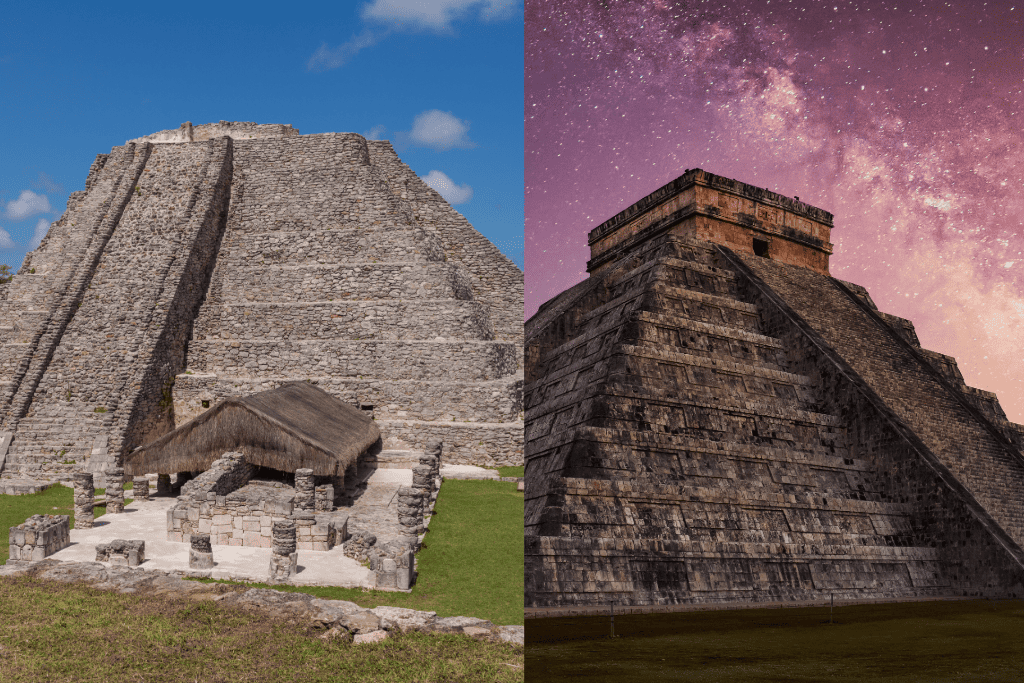 The fall of the Mayan civilization has long been interpreted as an abrupt and dramatic end to one of the most advanced cultures in Mesoamerican history. However, recent research challenges this narrative, suggesting a more complex and nuanced decline. While major cities like Chichen Itzá and Mayapán experienced periods of abandonment, rural communities demonstrated remarkable resilience and continued to thrive for centuries. This article explores the story behind the decline of the Mayan civilization, focusing on Mayapán's rise and fall, comparisons with Chichen Itzá, and the enduring legacy of the Mayan people.
The fall of the Mayan civilization has long been interpreted as an abrupt and dramatic end to one of the most advanced cultures in Mesoamerican history. However, recent research challenges this narrative, suggesting a more complex and nuanced decline. While major cities like Chichen Itzá and Mayapán experienced periods of abandonment, rural communities demonstrated remarkable resilience and continued to thrive for centuries. This article explores the story behind the decline of the Mayan civilization, focusing on Mayapán's rise and fall, comparisons with Chichen Itzá, and the enduring legacy of the Mayan people.
For decades, historians and archaeologists interpreted the abandonment of cities during the Late Classic Period (8th to 9th centuries) as a catastrophic collapse of the Mayan civilization. However, mounting evidence shows that while urban centers declined, the surrounding rural areas remained active and vibrant.
This shift represents a transformation rather than an outright collapse. The Mayan civilization adapted to environmental, social, and political challenges, transitioning from centralized urban hubs to decentralized rural communities.
Mayapán, often regarded as the last great capital of the Mayan civilization, flourished from the 13th to the 15th century, well after cities like Chichen Itzá had fallen. As a significant political and economic center, Mayapán replicated much of Chichen Itzá’s architectural style, including a smaller-scale version of the iconic Temple of Kukulcán.
However, Mayapán faced its own challenges. Internal conflicts, resource management issues, and political rivalries weakened the city. By the 15th century, Mayapán was abandoned, signaling the end of centralized Mayan political power.
In 2023, Mayapán was temporarily closed to the public due to land disputes and preservation efforts. It is expected to reopen on January 6, 2025, offering visitors a renewed opportunity to explore its fascinating history.
Both Chichen Itzá and Mayapán were pivotal in the story of the Mayan civilization, but they had distinct roles and trajectories.
Similarities:
Differences:
Despite the abandonment of major cities, rural Mayan communities continued to thrive. Studies using advanced technologies like LIDAR scanning have revealed extensive networks of settlements and agricultural systems that remained active long after urban centers declined.
These communities adapted to environmental challenges by modifying agricultural techniques and implementing water management systems such as cenotes and canals. Their resilience ensured the survival of Mayan culture, even as the political and economic structures of their cities crumbled.
Today, Chichen Itzá stands as a global icon and one of the New Seven Wonders of the World. Its most famous structure, the Temple of Kukulcán, draws thousands of visitors annually, especially during the equinoxes when the shadow of a serpent appears to slither down its steps.
Unlike Mayapán, Chichen Itzá has remained accessible to the public, supported by ongoing preservation efforts. Visitors can enjoy guided tours, light and sound shows like the Noches de Kukulcán and an immersive experience that brings the ancient city’s history to life.
The planned reopening of Mayapán in January 2025 offers an exciting opportunity for tourists and historians alike. Its smaller scale and fewer crowds compared to Chichen Itzá provide an intimate glimpse into the Mayan past.
According to Filiberto Ku Chan, the Mayan Indigenous Governor of Yucatán, efforts are underway to preserve and highlight the cultural significance of Mayapán for future generations. Visitors can look forward to exploring this historic site with renewed appreciation for its role in the Mayan story.
The narrative of the fall of the Mayan civilization is far more nuanced than a simple collapse. While cities like Chichen Itzá and Mayapán experienced periods of decline, they left behind enduring legacies. Rural communities adapted to challenges and preserved the cultural essence of the Mayans, ensuring that their traditions and achievements continued.
As we prepare for the reopening of Mayapán in 2025, we are reminded of the resilience and ingenuity of the Mayan civilization. Both Chichen Itzá and Mayapán offer unique perspectives on this fascinating culture, inviting visitors to rediscover their history and reflect on the complexities of societal change.